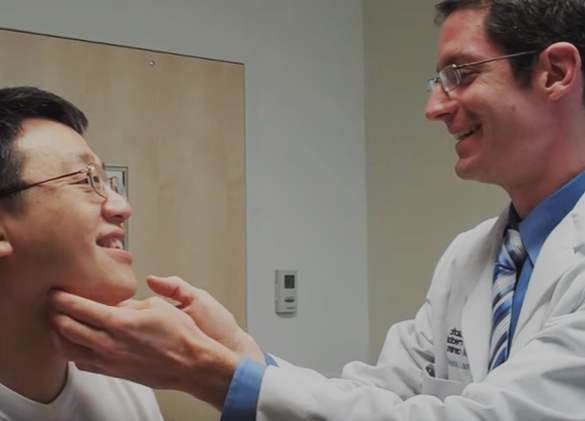A very powerful method of enhancing tip shape, support and function is by using lower lateral crural (LLC) strut grafts. Check out how lower lateral crural strut grafts can be used to fix both nasal tip bulbosity and external nasal valve collapse.
In a previous post I discussed a few ways we can use rhinoplasty techniques to create a surgical breathe right strip effect. I've also discussed some of the ways we can treat the bulbous nasal tip.
A very powerful method of enhancing tip shape, support and function is by using lower lateral crural (LLC) strut grafts. I've reviewed a case of using lower lateral crural strut grafts to treat tip bulbosity, but I've never really fully explained what a LLC strut is. Now it's time.
Where are the lower lateral crura?
To start let's review where the lower lateral cartilages (LLC) are.

You can see how the lower lateral crura provide a large portion of the nasal tip and sidewall support.
How should the lower lateral crura look?
The LLC orientation plays an important role in how the nose will ultimately look and function. If the LLCs are convex the tip will have a more full or bulbous appearance. If these cartilages are concave the tip will appear more pinched. When you see the underlying structure of an aesthetically appealing tip you'll notice that the LLCs are typically flat.
How to create flat LLCs?
The ability to reliably modify the lower lateral crura shape is key to obtaining consistent rhinoplasty results. There are a few ways of converting convex LLCs into a more flat orientation. This includes suture techniques such as dome binding sutures and cartilage removal techniques such as LLC cephalic trimming. We'll talk about these two methods in future posts.
LLC strut grafting has the benefit of being able to both flatten the LLCs and add strength to the nasal tip and external nasal valve.
How are lower lateral crural strut grafts used?
LLC strut grafts are composed of a straight, relatively strong piece of cartilage (usually septal or rib) that is carved into a rectangular shape. The first step in graft placement is to perform a cephalic trim which involves trimming the upper portion of the lower lateral cartilage.

This allows us access to the underside of the LLC where we can then dissect the lower lateral crura away from the underlying nasal skin lining.

Further dissection allows us to create a large enough pocket in which to place the graft:

The strut grafts are then inserted in this pocket that has been created between the LLCs and internal skin lining:

The graft is then sutured to the LLCs above.

The strong, straight strut grafts then act as I-beams and cause the LLCs to flatten as they take on the same shape as the strut graft. This photo shows a different patient's bulbous tip cartilages before LLC strut graft placement:

And here are the same patient's lower lateral cartilages after LLC strut graft placement:

The LLCs after strut placement are not only straighter, but thanks to the added support they are also stronger. This added strength allows us to improve external nasal valve collapse by better supporting the outer nostril walls during inspiration. You can see a case study of LLC strut grafts in action here. This schematic gives a great overview of where the LLC strut grafts are placed:



